Characterisation of Large-Sized REBaCuO Bulks for Application in Flux Modulation Machines
Abstract
1. Introduction
2. Basic Layout of the Flux Modulation Machine
3. REBaCuO Bulk Manufacturing Process
4. Characterisation of S1 to S10 Large GdBaCuO Bulks
4.1. Relevancy of Trapped Magnetic Field Measurements
4.2. Trapped Magnetic Field Measurements of Pre-Processed S1 to S10 Bulks
4.3. Trapped Field Distribution of Post-Processed S1 to S10 Bulks
4.3.1. Experimental Setup
4.3.2. Results and Discussion on the Trapped Field
5. Characterisations of S11 Bulk
5.1. Global Characterisation: Trapped Field Mapping
5.2. Local Characterisation: Small Samples Cut Out from S11
5.2.1. Extraction of Samples and Their Preparation
- 1 mm below the bulk top surface, labelled “T” as in “Top”, so that G4T refers to the location “G4” in Figure 6, just below the top surface “T”.
- In the middle of bulk S11, approximately 4.5 mm below its top surface, the label is “M” as in “Middle”, e.g., G4M.
- 1 mm above the bottom of the sample, labelled with the letter “B” as in “Bottom”, e.g., G4B.
5.2.2. Estimation of Critical Current Density () from the Magnetic Moment
5.2.3. Results and Discussion on
5.2.4. Fishtail or Peak Effect
5.2.5. Trends in the Plane
5.2.6. Flux Pinning Analysis
5.3. Characterisations Performed at 40 K, Nominal Operating Temperature of the Bulks in the Machine
5.4. Discussion on the Characterisations of the S11 Bulk and Its Various Samples
5.5. Microstructure and Composition Analyses of S11 Samples
5.5.1. X-ray Diffraction
5.5.2. Scanning Electron Microscopy (SEM)
6. Simulation of the Large-Sized S11 Bulk
7. Conclusions
Supplementary Materials
Author Contributions
Funding
Institutional Review Board Statement
Informed Consent Statement
Data Availability Statement
Acknowledgments
Conflicts of Interest
Abbreviations
| EDS | Energy-Dispersive X-ray Spectroscopy |
| FC | Field Cooling |
| FROST | Flux-barrier Rotating Superconducting Topology |
| GREEN | Groupe de Recherche en Energie Electrique de Nancy |
| GSB | Growth Sector Boundary |
| GSR | Growth Sector Region |
| HTS | High-Temperature Superconductor |
| MPMS | Magnetic Properties Measurement System |
| SEM | Scanning Electron Microscopy |
| XRD | X-ray Diffraction |
| ZFC | Zero Field Cooling |
References
- Filipenko, M.; Biser, S.; Boll, M.; Corduan, M.; Noe, M.; Rostek, P. Comparative Analysis and Optimization of Technical and Weight Parameters of Turbo-Electric Propulsion Systems. Aerospace 2020, 7, 107. [Google Scholar] [CrossRef]
- Hartmann, C.; Nøland, J.K.; Nilssen, R.; Mellerud, R. Dual Use of Liquid Hydrogen in a Next-Generation PEMFC-Powered Regional Aircraft With Superconducting Propulsion. IEEE Trans. Transp. Electrif. 2022, 8, 4760–4778. [Google Scholar] [CrossRef]
- Chow, C.C.T.; Ainslie, M.D.; Chau, K.T. High temperature superconducting rotating electrical machines: An overview. Energy Rep. 2023, 9, 1124–1156. [Google Scholar] [CrossRef]
- Tomita, M.; Murakami, M. High-temperature superconductor bulk magnets that can trap magnetic fields of over 17 tesla at 29 K. Nature 2003, 421, 517–520. [Google Scholar] [CrossRef]
- Durrell, J.H.; Dennis, A.R.; Jaroszynski, J.; Ainslie, M.D.; Palmer, K.G.B.; Shi, Y.H.; Campbell, A.M.; Hull, J.; Strasik, M.; Hellstrom, E.E.; et al. A trapped field of 17.6 T in melt-processed, bulk Gd-Ba-Cu-O reinforced with shrink-fit steel. Supercond. Sci. Technol. 2014, 27, 082001. [Google Scholar] [CrossRef]
- Ailam, E.H.; Netter, D.; Leveque, J.; Douine, B.; Masson, P.J.; Rezzoug, A. Design and Testing of a Superconducting Rotating Machine. IEEE Trans. Appl. Supercond. 2007, 17, 27–33. [Google Scholar] [CrossRef]
- Malé, G.; Lubin, T.; Mezani, S.; Lévêque, J. Analytical calculation of the flux density distribution in a superconducting reluctance machine with HTS bulks rotor. Math. Comput. Simul. 2013, 90, 230–243. [Google Scholar] [CrossRef]
- Douma, B.C.; Abderezzak, B.; Ailam, E.; Felseghi, R.A.; Filote, C.; Dumitrescu, C.; Raboaca, M.S. Design Development and Analysis of a Partially Superconducting Axial Flux Motor Using YBCO Bulks. Materials 2021, 14, 4295. [Google Scholar] [CrossRef] [PubMed]
- Colle, A.; Lubin, T.; Ayat, S.; Gosselin, O.; Lévêque, J. Analytical Model for the Magnetic Field Distribution in a Flux Modulation Superconducting Machine. IEEE Trans. Magn. 2019, 55, 1–9. [Google Scholar] [CrossRef]
- Colle, A.; Lubin, T.; Leveque, J. Design of a superconducting machine and its cooling system for an aeronautics application. Eur. Phys. J. Appl. Phys. 2021, 93, 30901. [Google Scholar] [CrossRef]
- Dorget, R.; Lubin, T.; Ayat, S.; Lévêque, J. 3-D Semi-Analytical Model of a Superconducting Axial Flux Modulation Machine. IEEE Trans. Magn. 2021, 57, 1–15. [Google Scholar] [CrossRef]
- Colle, A.; Lubin, T.; Ayat, S.; Gosselin, O.; Leveque, J. Test of a Flux Modulation Superconducting Machine for Aircraft. J. Physics Conf. Ser. 2020, 1590, 012052. [Google Scholar] [CrossRef]
- Dorget, R.; Ayat, S.; Biaujaud, R.; Tanchon, J.; Lacapere, J.; Lubin, T.; Lévêque, J. Design of a 500 kW partially superconducting flux modulation machine for aircraft propulsion. J. Physics Conf. Ser. 2021, 1975, 012033. [Google Scholar] [CrossRef]
- Dorget, R.; Nouailhetas, Q.; Colle, A.; Berger, K.; Sudo, K.; Ayat, S.; Lévêque, J.; Koblischka, M.R.; Sakai, N.; Oka, T.; et al. Review on the Use of Superconducting Bulks for Magnetic Screening in Electrical Machines for Aircraft Applications. Materials 2021, 14, 2847. [Google Scholar] [CrossRef] [PubMed]
- CAN Superconductors. Superconducting Single or Multi Domain Crystals. Available online: https://www.can-superconductors.com/hts-bulks-and-materials/rebco-melt-textured-bulks/ (accessed on 25 June 2024).
- Antončík, F.; Lojka, M.; Hlásek, T.; Plecháček, V.; Jankovský, O. Tuning the top-seeded melt growth of REBCO single-domain superconducting bulks by a pyramid-like buffer stack. Ceram. Int. 2022, 48, 5377–5385. [Google Scholar] [CrossRef]
- SYNOVA. Laser Systems for Metal, Diamond and Semiconductor Industries. Available online: https://www.synova.ch/ (accessed on 25 June 2024).
- Quantum Design. Physical Property Measurement System (PPMS). Available online: https://qd-europe.com/fr/en/product/physical-property-measurement-system-ppms/ (accessed on 25 June 2024).
- Bean, C.P. Magnetization of Hard Superconductors. Phys. Rev. Lett. 1962, 8, 250–253. [Google Scholar] [CrossRef]
- Bean, C.P. Magnetization of High-Field Superconductors. Rev. Mod. Phys. 1964, 36, 31–39. [Google Scholar] [CrossRef]
- Kim, Y.B.; Hempstead, C.F.; Strnad, A.R. Critical Persistent Currents in Hard Superconductors. Phys. Rev. Lett. 1962, 9, 306–309. [Google Scholar] [CrossRef]
- Chen, D.; Goldfarb, R.B. Kim model for magnetization of type-II superconductors. J. Appl. Phys. 1989, 66, 2489–2500. [Google Scholar] [CrossRef]
- van Dalen, A.J.J.; Koblischka, M.R.; Griessen, R.; Jirsa, M.; Ravi Kumar, G. Dynamic contribution to the fishtail effect in a twin-free DyBa2Cu3O7-δ single crystal. Phys. C Supercond. 1995, 250, 265–274. [Google Scholar] [CrossRef]
- Cohen, L.F.; Laverty, J.R.; Perkins, G.K.; Caplin, A.D.; Assmus, W. Fishtails, scales and magnetic fields. Cryogenics 1993, 33, 352–356. [Google Scholar] [CrossRef]
- Jirsa, M.; Pust, L.; Dlouhý, D.; Koblischka, M.R. Fishtail shape in the magnetic hysteresis loop for superconductors:Interplay between different pinning mechanisms. Phys. Rev. B 1997, 55, 3276–3284. [Google Scholar] [CrossRef]
- Pavan Kumar Naik, S.; Miryala, M.; Koblischka, M.R.; Koblischka-Veneva, A.; Oka, T.; Murakami, M. Production of Sharp-Edged and Surface-Damaged Y2BaCuO5 by Ultrasound: Significant Improvement of Superconducting Performance of Infiltration Growth-Processed YBa2Cu3O7-δ Bulk Superconductors. ACS Omega 2020, 5, 6250–6259. [Google Scholar] [CrossRef]
- Antal, V.; Zmorayová, K.; Rajňak, M.; Vojtkova, L.; Hlásek, T.; Plecháček, J.; Diko, P. Relationship between local microstructure and superconducting properties of commercial YBa2Cu3O7-δ bulk. Supercond. Sci. Technol. 2020, 33, 044004. [Google Scholar] [CrossRef]
- Hlásek, T.; Shi, Y.; Durrell, J.H.; Dennis, A.R.; Namburi, D.K.; Plecháček, V.; Rubešová, K.; Cardwell, D.A.; Jankovský, O. Cost-effective isothermal top-seeded melt-growth of single-domain YBCO superconducting ceramics. Solid State Sci. 2019, 88, 74–80. [Google Scholar] [CrossRef]
- Cardwell, D.A.; Shi, Y.; Numburi, D.K. Reliable single grain growth of (RE)BCO bulk superconductors with enhanced superconducting properties. Supercond. Sci. Technol. 2020, 33, 024004. [Google Scholar] [CrossRef]
- Shi, Y.; Gough, M.; Dennis, A.R.; Durrell, J.H.; Cardwell, D.A. Distribution of the superconducting critical current density within a Gd–Ba–Cu–O single grain. Supercond. Sci. Technol. 2020, 33, 044009. [Google Scholar] [CrossRef]
- Namburi, D.K.; Takahashi, K.; Hirano, T.; Kamada, T.; Fujishiro, H.; Shi, Y.H.; Cardwell, D.A.; Durrell, J.H.; Ainslie, M.D. Pulsed-field magnetisation of Y-Ba-Cu-O bulk superconductors fabricated by the infiltration growth technique. Supercond. Sci. Technol. 2020, 33, 115012. [Google Scholar] [CrossRef]
- Fuchs, G.; Nenkov, K.; Krabbes, G.; Weinstein, R.; Gandini, A.; Sawh, R.; Mayes, B.; Parks, D. Strongly enhanced irreversibility fields and Bose-glass behaviour in bulk YBCO with discontinuous columnar irradiation defects. Supercond. Sci. Technol. 2007, 20, S197. [Google Scholar] [CrossRef]
- Dew–Hughes, D. Flux pinning mechanisms in type II superconductors. Philos. Mag. A J. Theor. Exp. Appl. Phys. 1974, 30, 293–305. [Google Scholar] [CrossRef]
- Koblischka, M.R.; Muralidhar, M. Pinning force scaling and its analysis in the LRE-123 ternary compounds. Phys. C Supercond. Its Appl. 2014, 496, 23–27. [Google Scholar] [CrossRef]
- Xu, C.; Hu, A.; Ichihara, M.; Sakai, N.; Izumi, M.; Hirabayashi, I. Enhanced flux pinning in GdBaCuO bulk superconductors by Zr dopants. Phys. C Supercond. Its Appl. 2007, 463–465, 367–370. [Google Scholar] [CrossRef]
- Koblischka, M.R.; Murakami, M. Pinning mechanisms in bulk high-Tc superconductors. Supercond. Sci. Technol. 2000, 13, 738. [Google Scholar] [CrossRef]
- Pavan Kumar Naik, S.; Muralidhar, M.; Jirsa, M.; Murakami, M. Enhanced flux pinning of single grain bulk (Gd, Dy)BCO superconductors processed by cold-top-seeded infiltration growth method. Mater. Sci. Eng. B 2020, 253, 114494. [Google Scholar] [CrossRef]
- Koblischka-Veneva, A.; Koblischka, M.R. (RE)Ba2Cu3O7-δ and the Roeser-Huber Formula. Materials 2021, 14, 6068. [Google Scholar] [CrossRef]
- Namburi, D.K.; Shi, Y.; Cardwell, D.A. The processing and properties of bulk (RE)BCO high temperature superconductors: Current status and future perspectives. Supercond. Sci. Technol. 2021, 34, 053002. [Google Scholar] [CrossRef]
- Yang, H.; Luo, H.; Wang, Z.; Wen, H.H. Fishtail effect and the vortex phase diagram of single crystal Ba0.6K0.4Fe2As2. Appl. Phys. Lett. 2008, 93, 142506. [Google Scholar] [CrossRef]
- Bragg, W.H.; Bragg, W.L. The reflection of X-rays by crystals. Proc. R. Soc. Lond. A 1997, 88, 428–438. [Google Scholar] [CrossRef]
- Hayashi, S.; Kamada, T.; Kohiki, S.; Hirao, T.; Wasa, K.; Matsuda, A.; Hangyo, M.; Nakashima, S.i. Characteristics of Superconducting Gd-Ba-Cu-O Thin Films. Jpn. J. Appl. Phys. 1990, 29, L302. [Google Scholar] [CrossRef]
- Zhao, W.; Shi, Y.; Zhou, D.; Dennis, A.R.; Cardwell, D.A. Quantification of the level of samarium/barium substitution in the Ag-Sm1+xBa2-xCu3O7-δ system. J. Eur. Ceram. Soc. 2018, 38, 5036–5042. [Google Scholar] [CrossRef]
- COMSOL. COMSOL Multiphysics® Simulation Software. Available online: https://www.comsol.com/comsol-multiphysics (accessed on 13 July 2024).
- Ainslie, M.D.; Fujishiro, H. Modelling of bulk superconductor magnetization. Supercond. Sci. Technol. 2015, 28, 053002. [Google Scholar] [CrossRef]
- Dular, J.; Berger, K.; Geuzaine, C.; Vanderheyden, B. What Formulation Should One Choose for Modeling a 3-D HTS Motor Pole with Ferromagnetic Materials? IEEE Trans. Magn. 2022, 58, 1–4. [Google Scholar] [CrossRef]
- Chen, D.X.; Prados, C.; Pardo, E.; Sanchez, A.; Hernando, A. Transverse demagnetizing factors of long rectangular bars: I. Analytical expressions for extreme values of susceptibility. J. Appl. Phys. 2002, 91, 5254–5259. [Google Scholar] [CrossRef]
- Sawicki, M.; Stefanowicz, W.; Ney, A. Sensitive SQUID magnetometry for studying nanomagnetism. Semicond. Sci. Technol. 2011, 26, 064006. [Google Scholar] [CrossRef]
- Xing, Y.; Russo, G.; Ribani, P.L.; Morandi, A.; Bernstein, P.; Rossit, J.; Lemonnier, S.; Delorme, F.; Noudem, J. Very strong levitation force and stability achieved with a large MgB2 superconductor disc. Supercond. Sci. Technol. 2024, 37, 02LT01. [Google Scholar] [CrossRef]
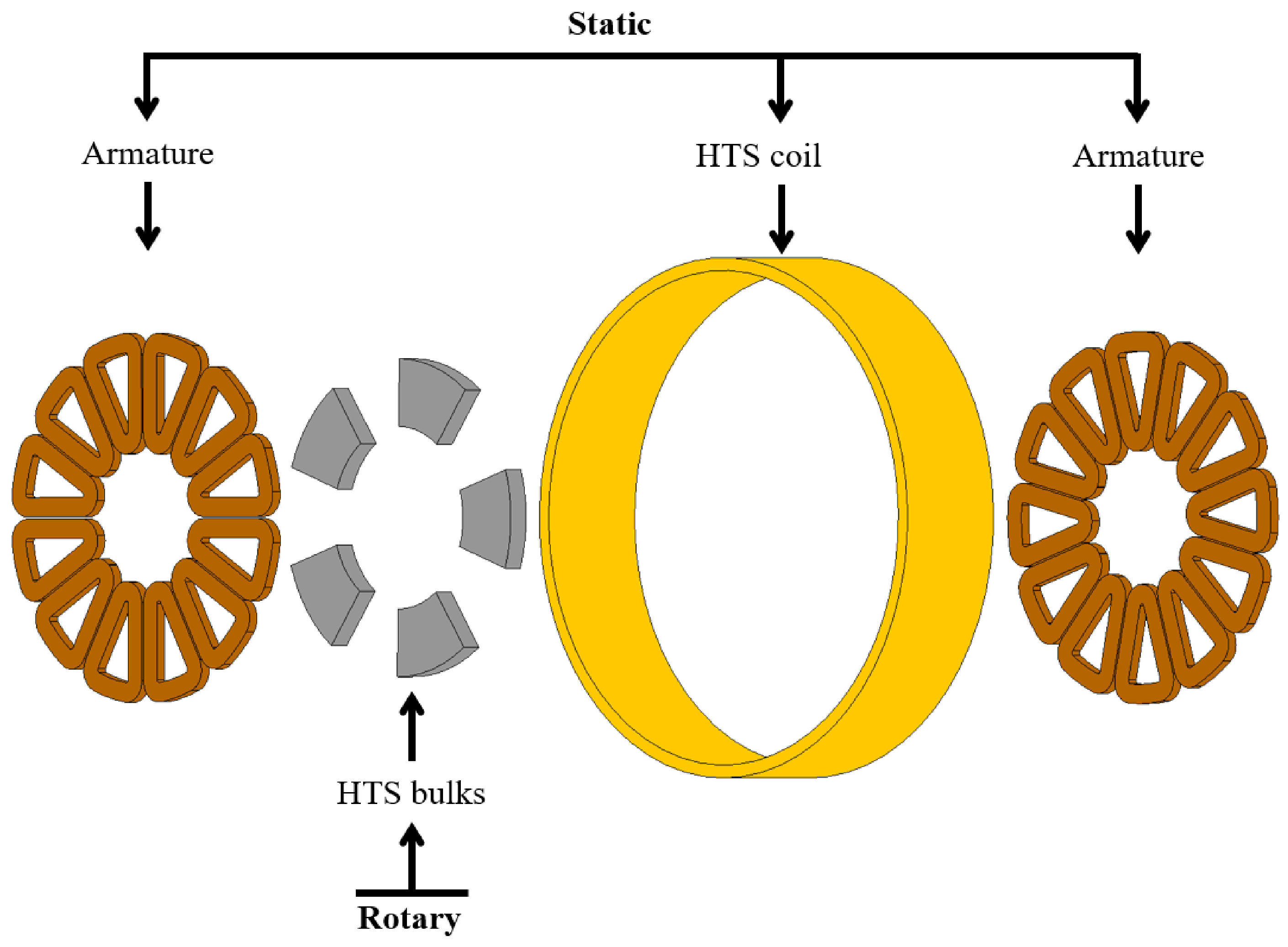
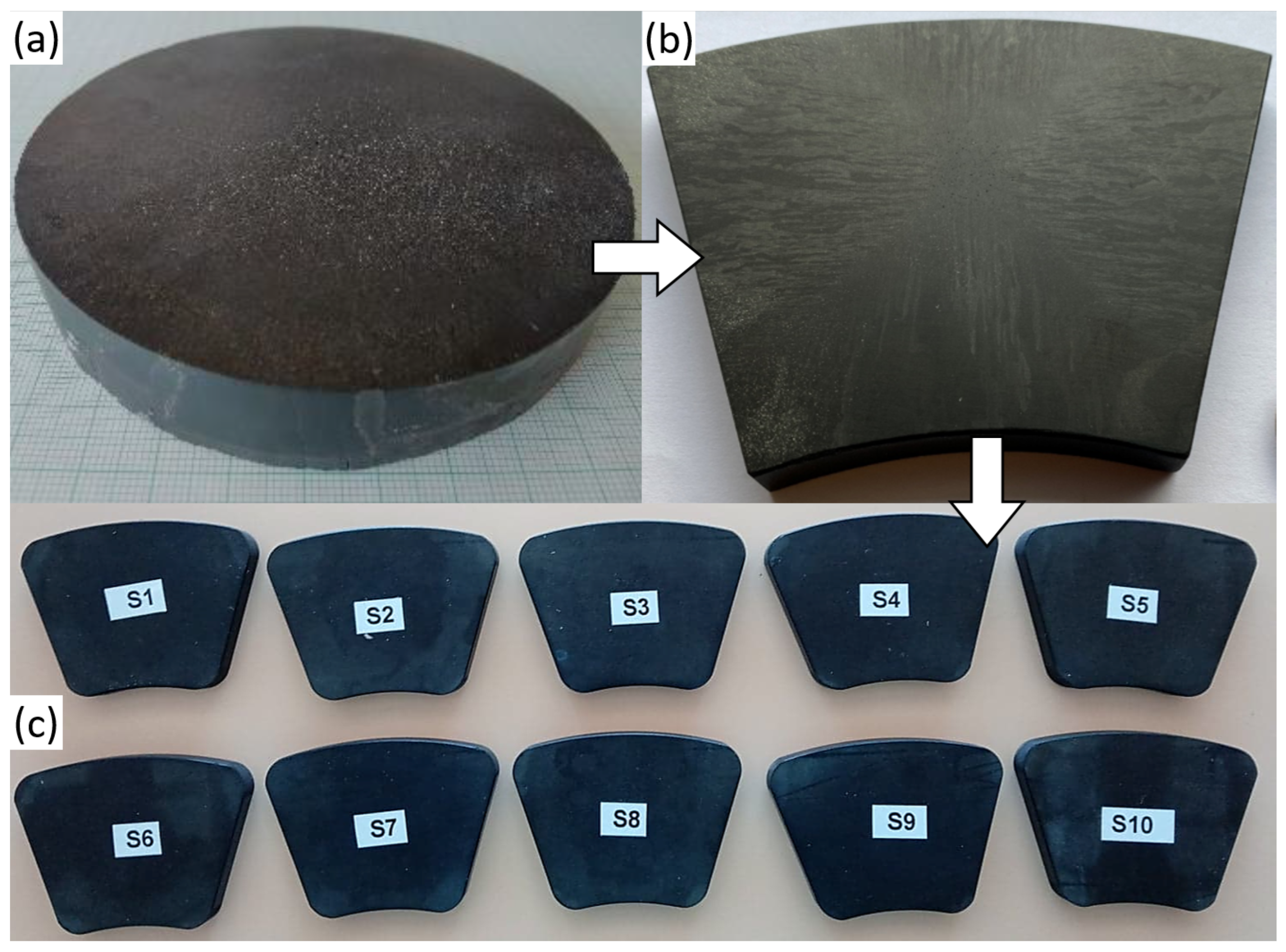
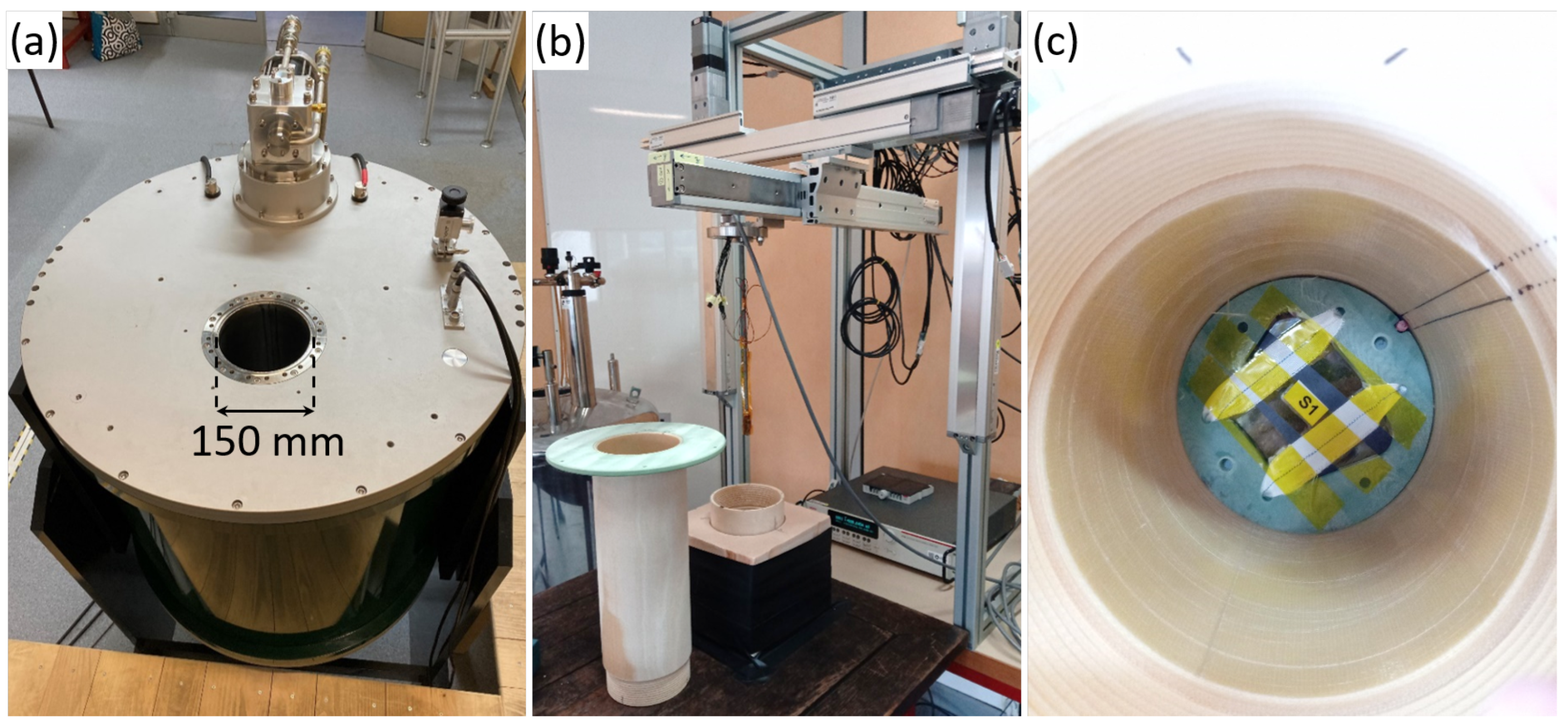
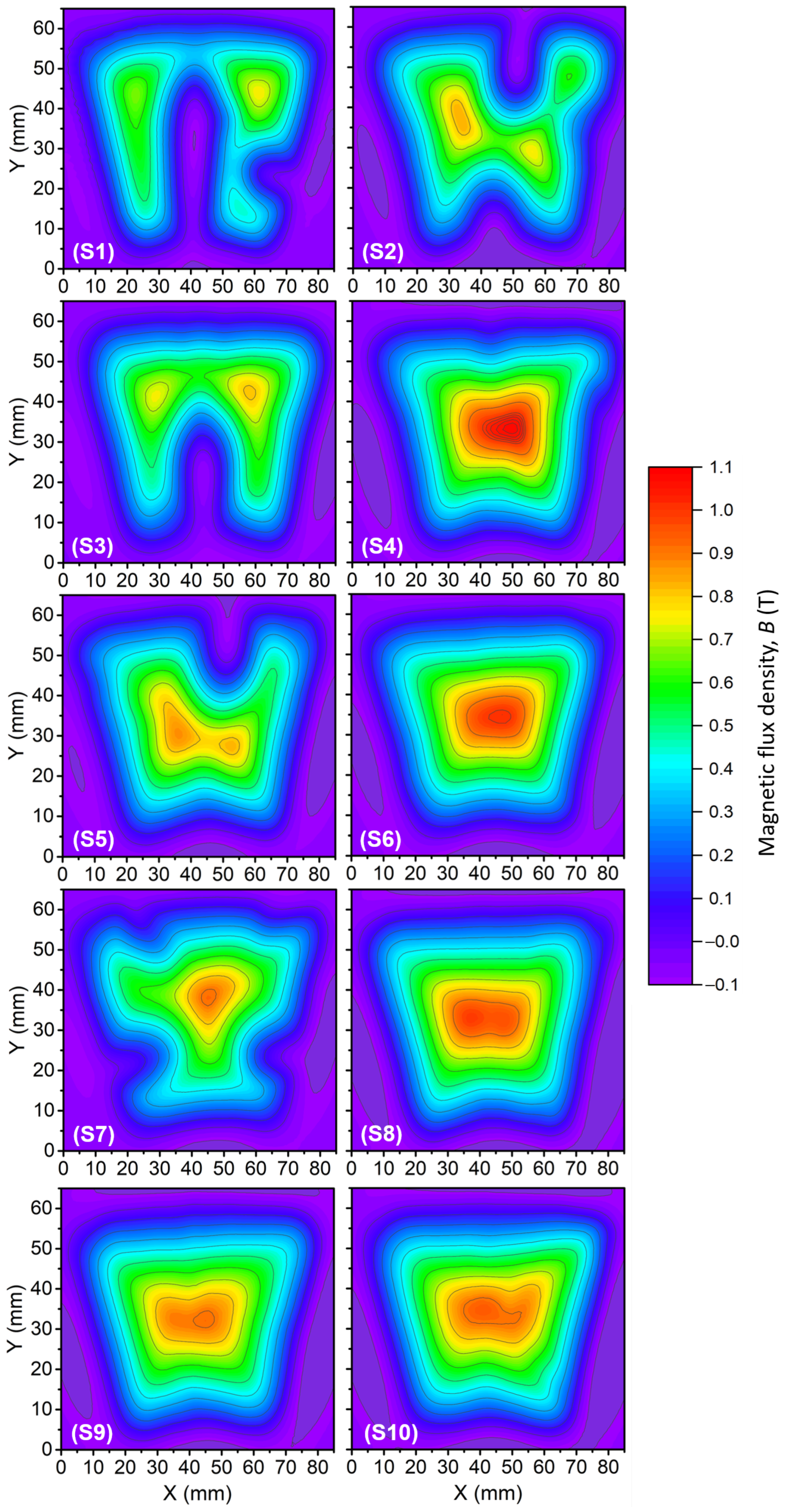

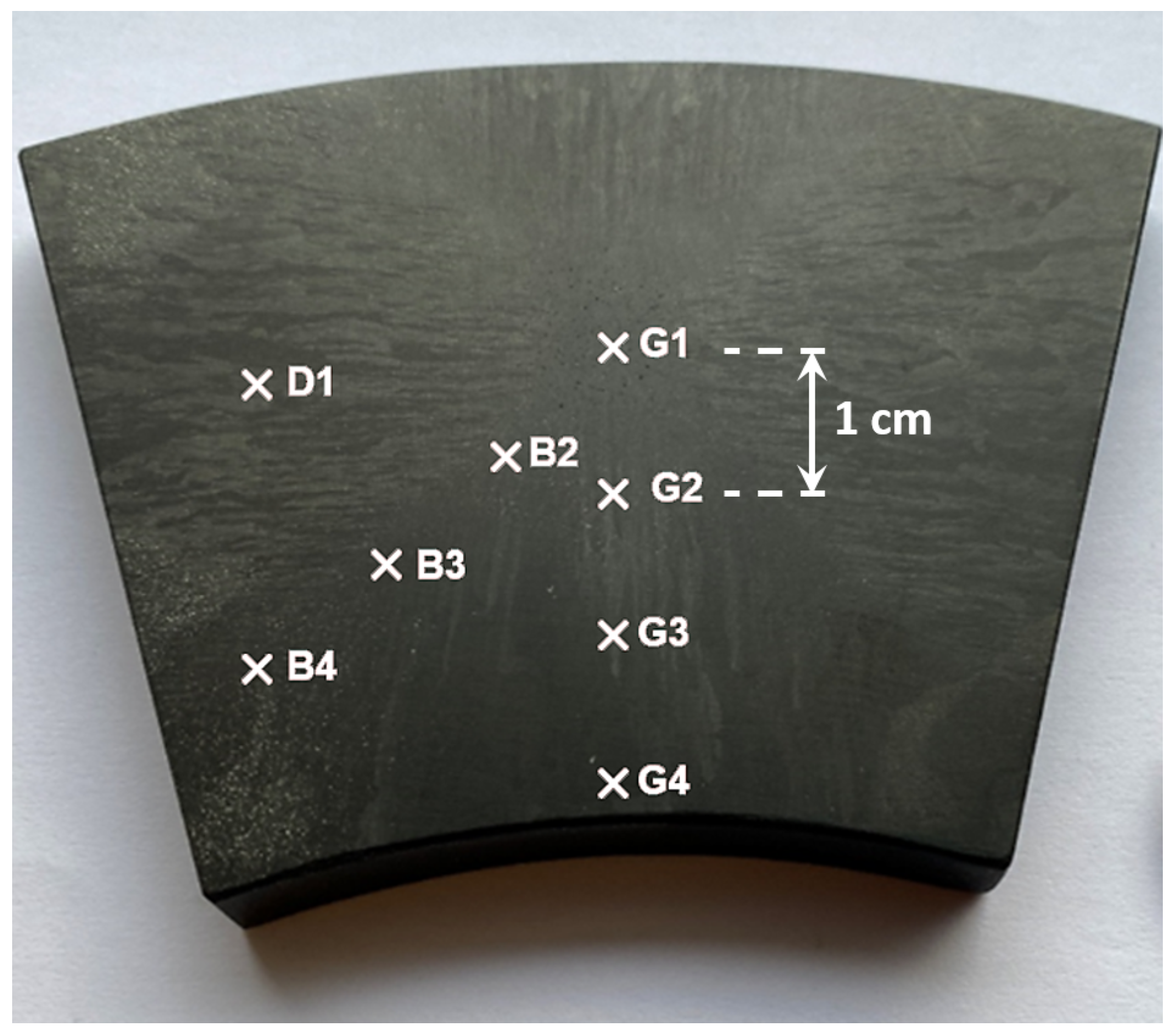
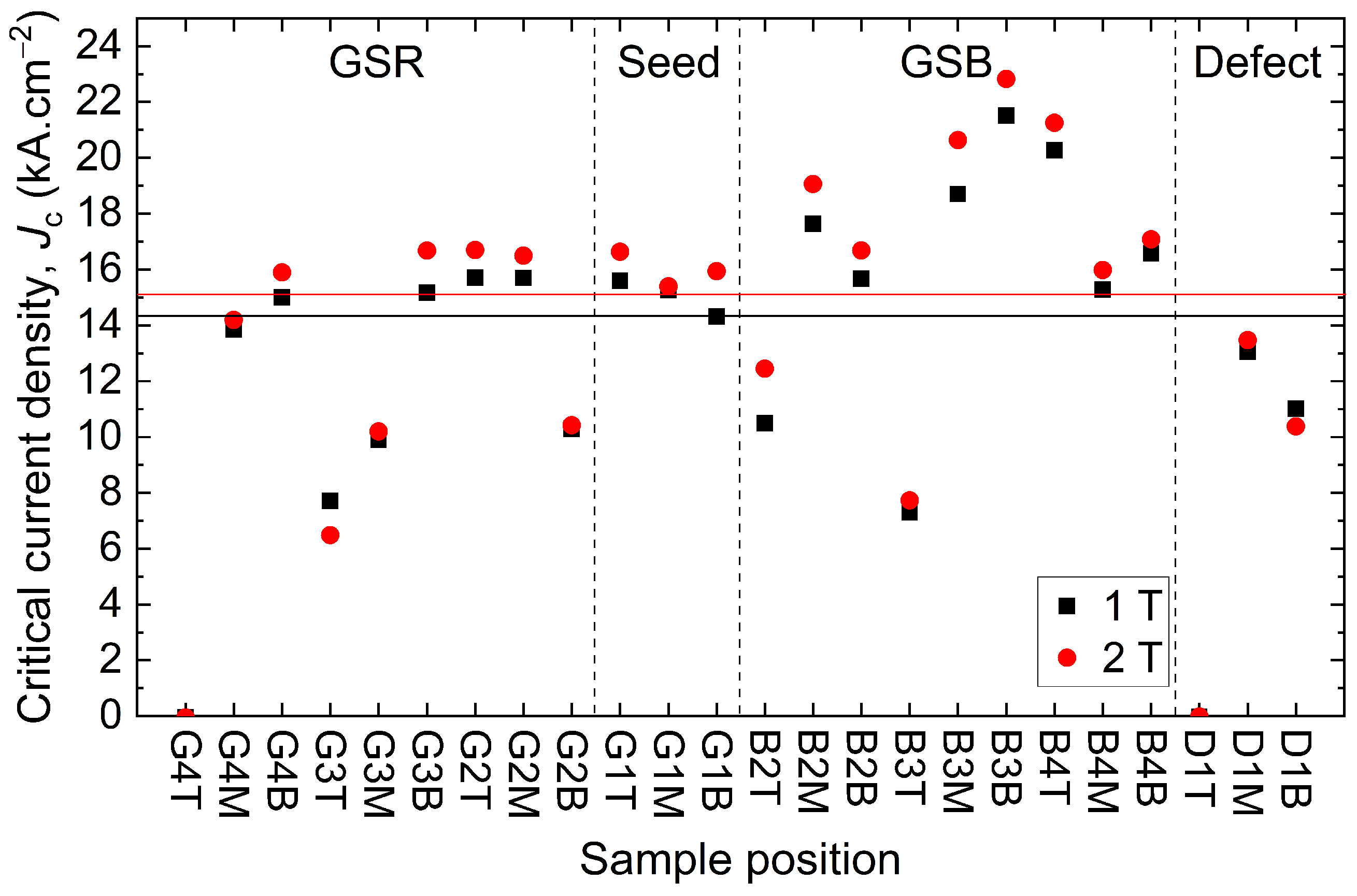
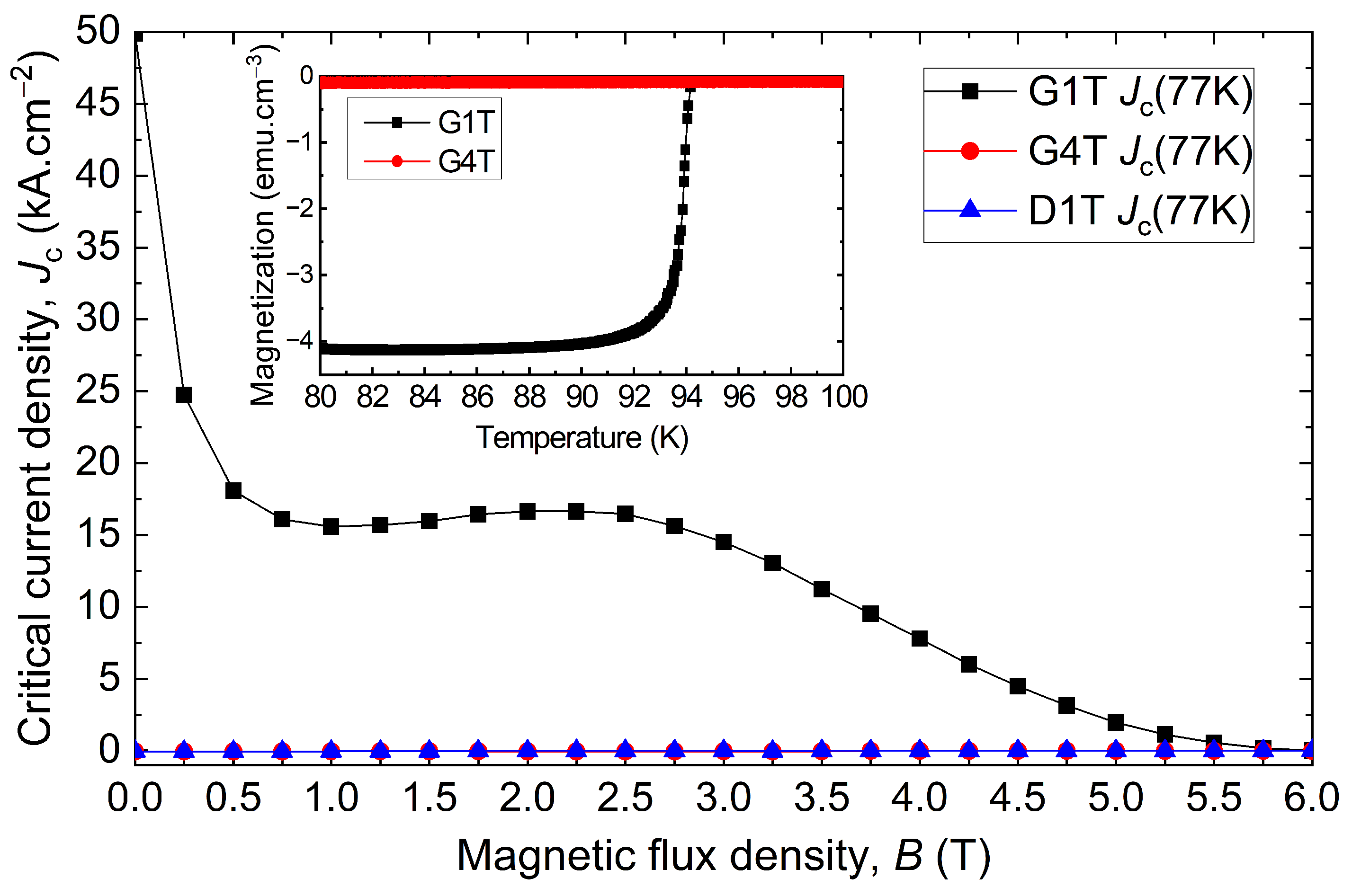
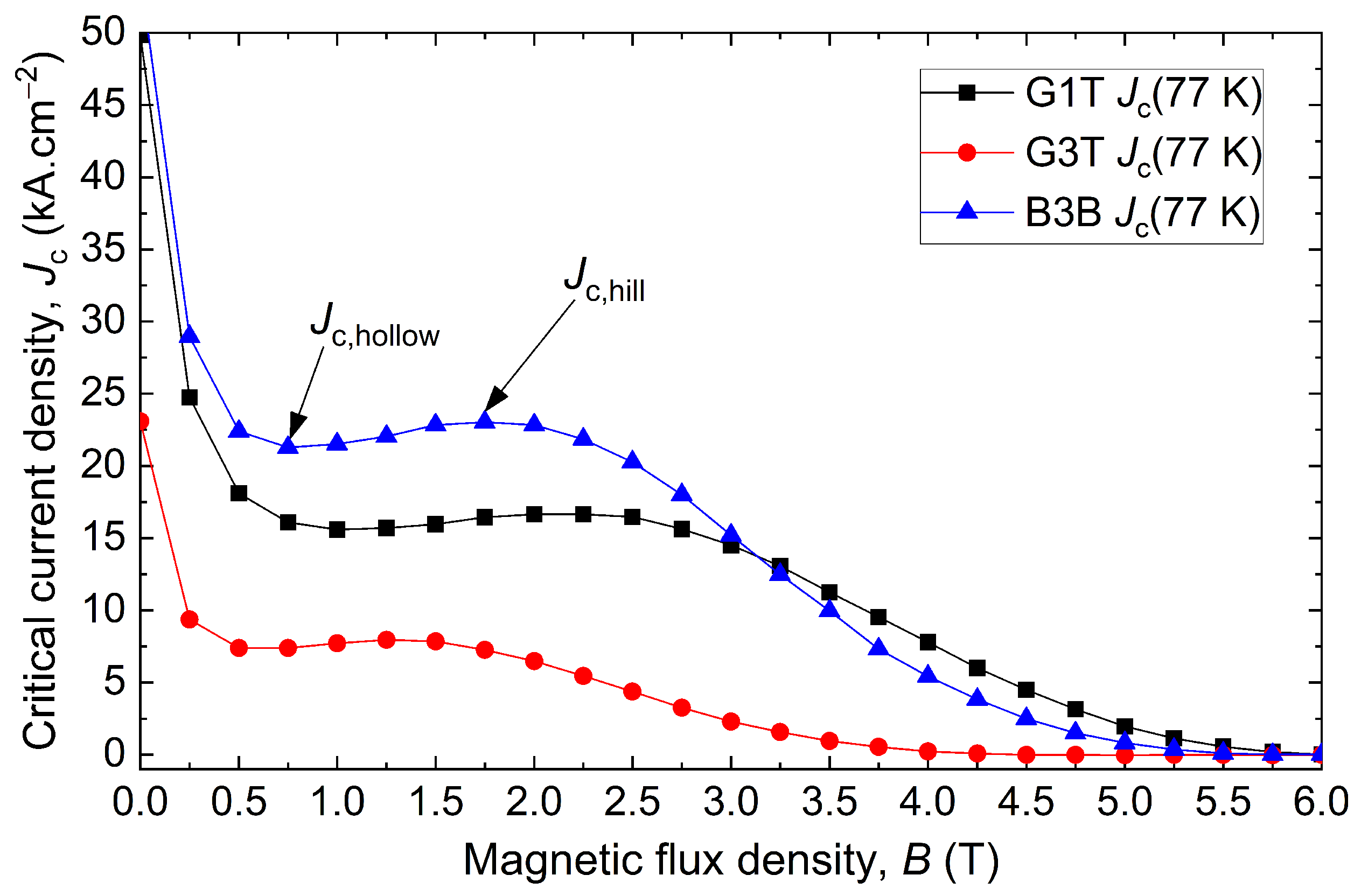


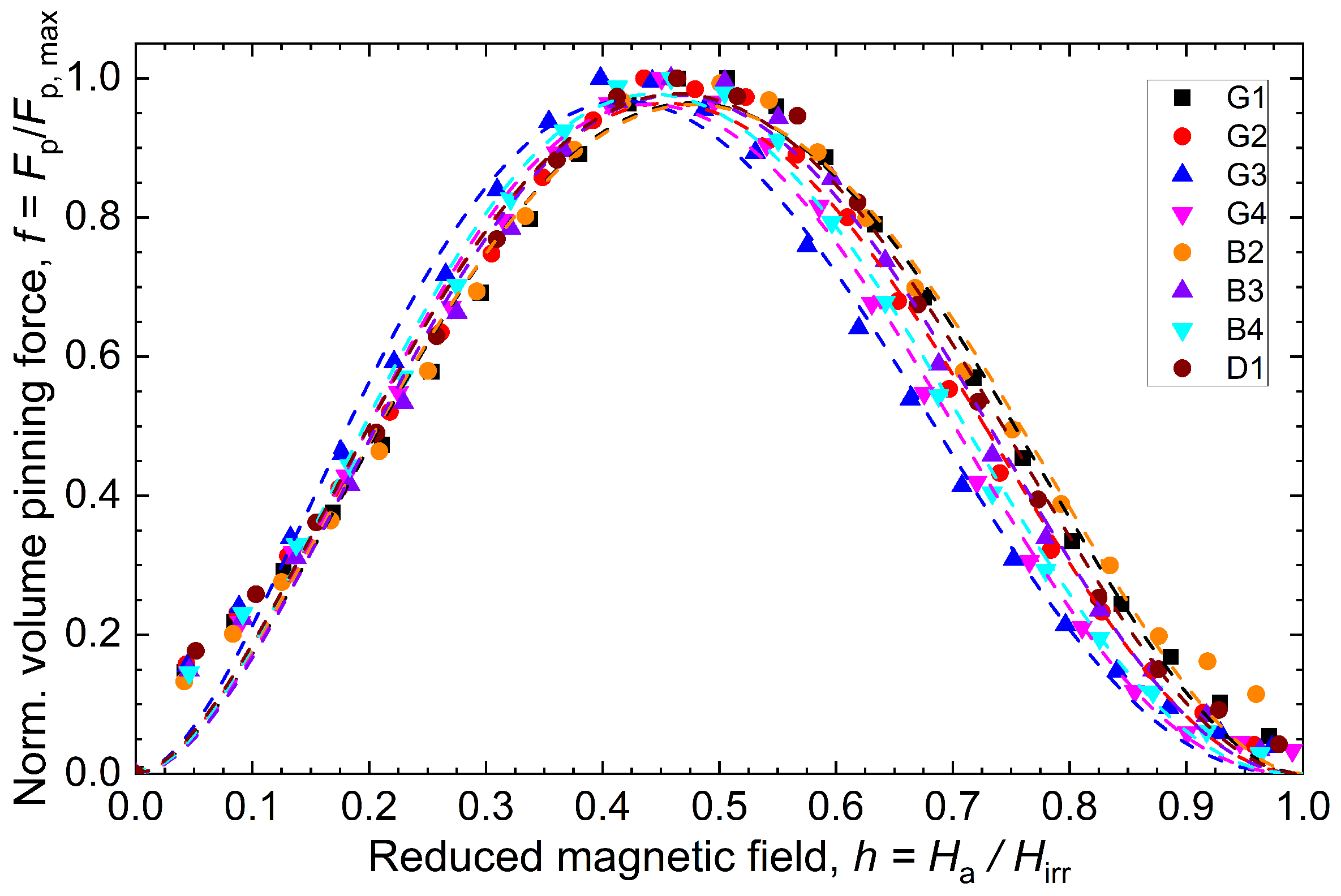
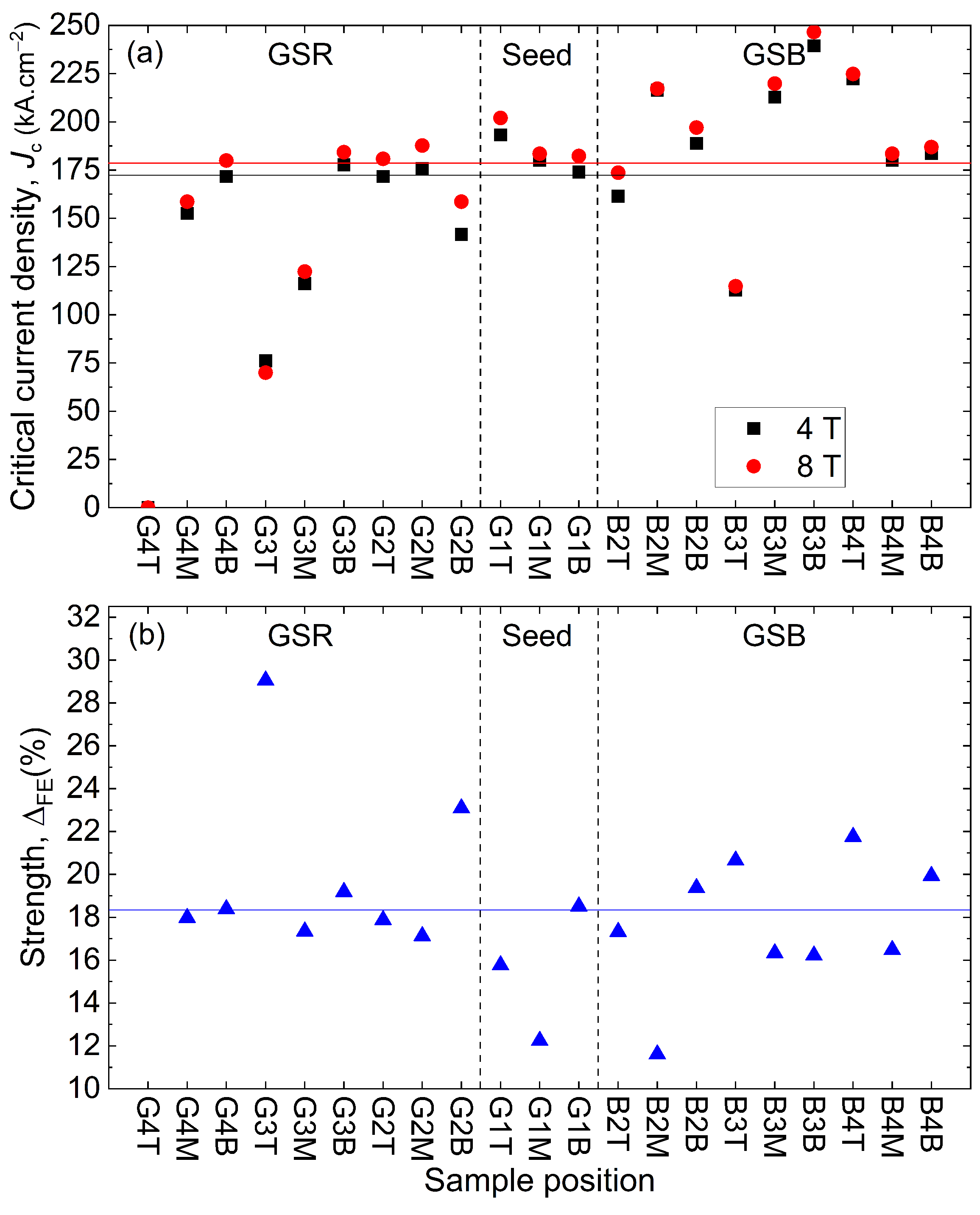
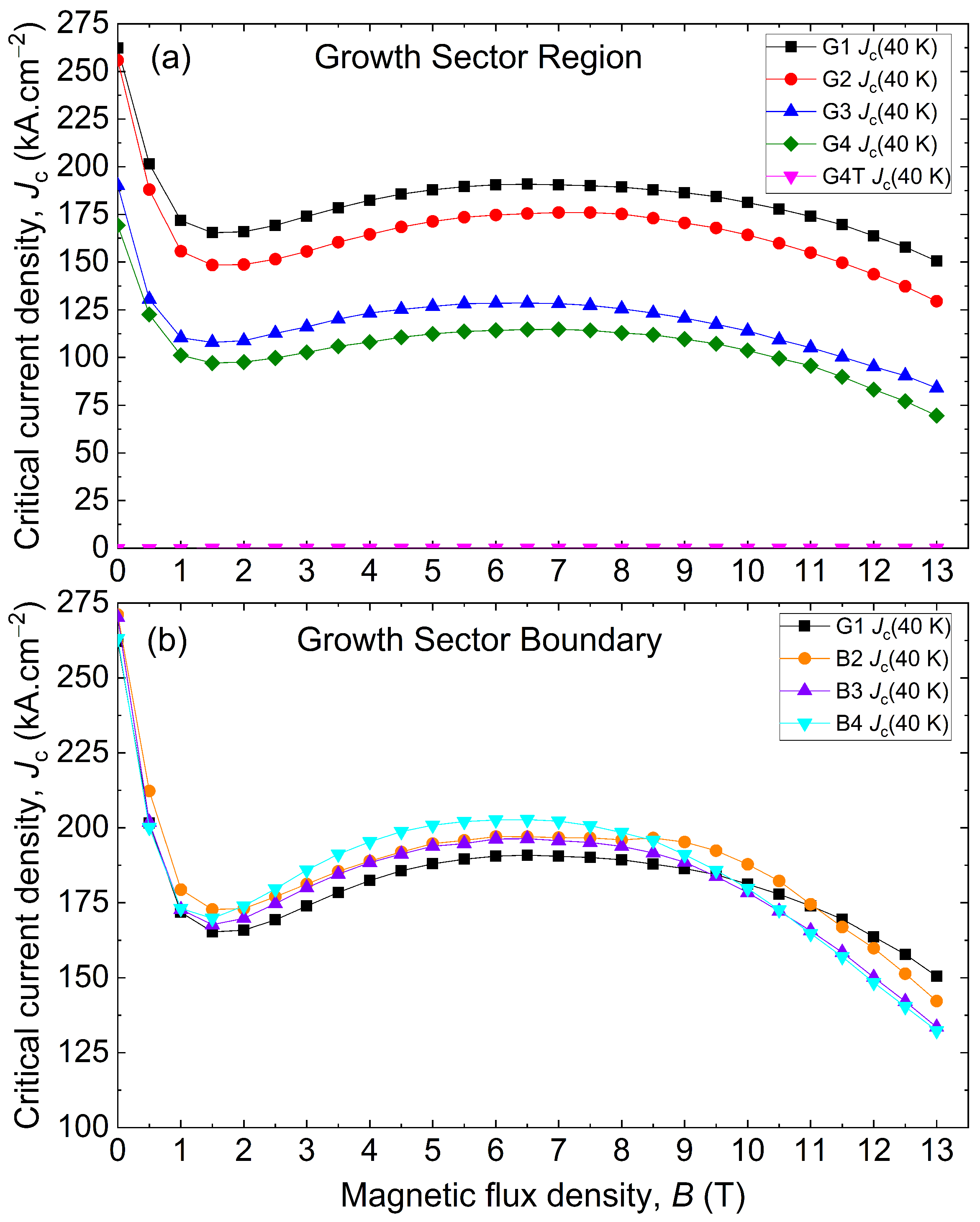
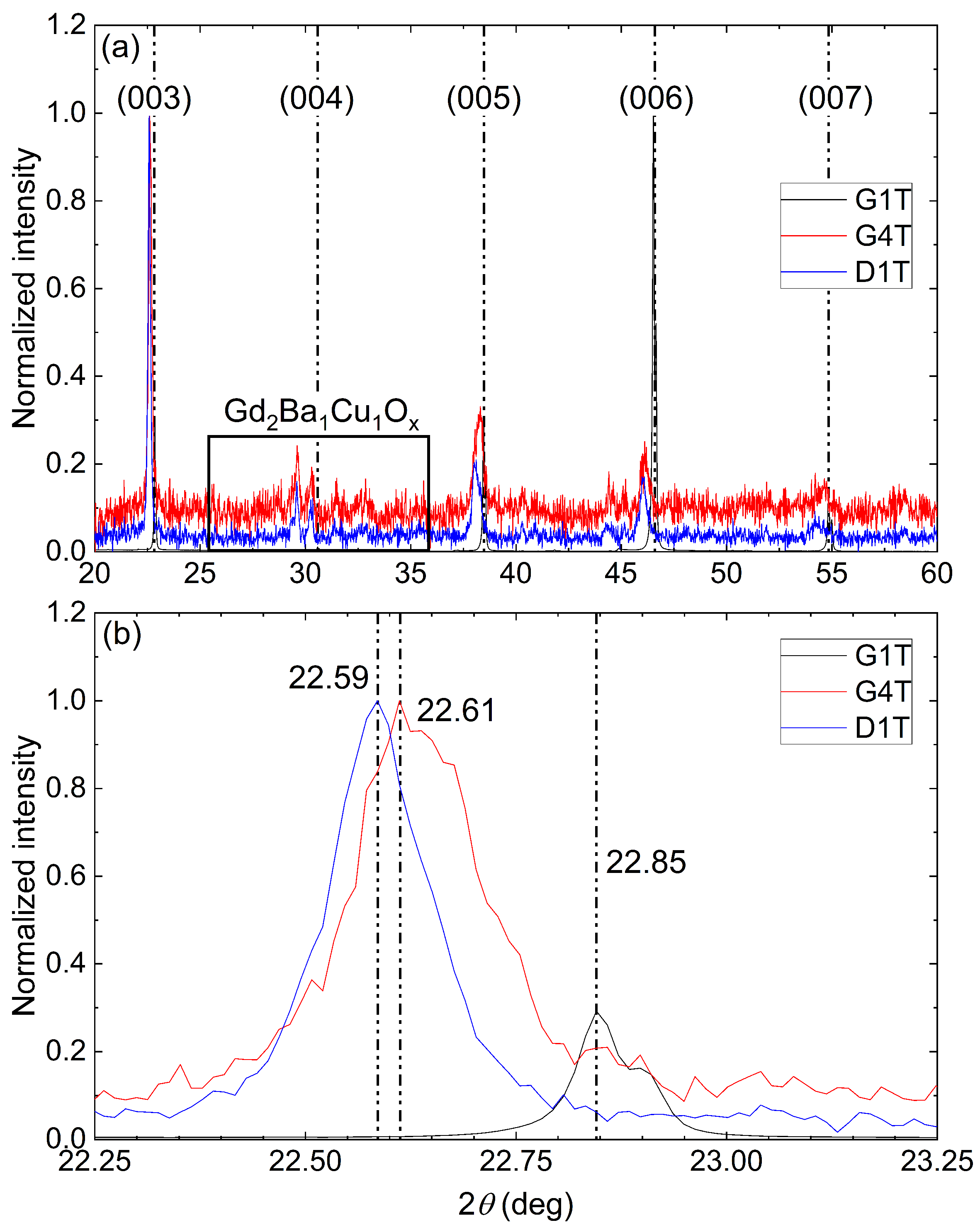


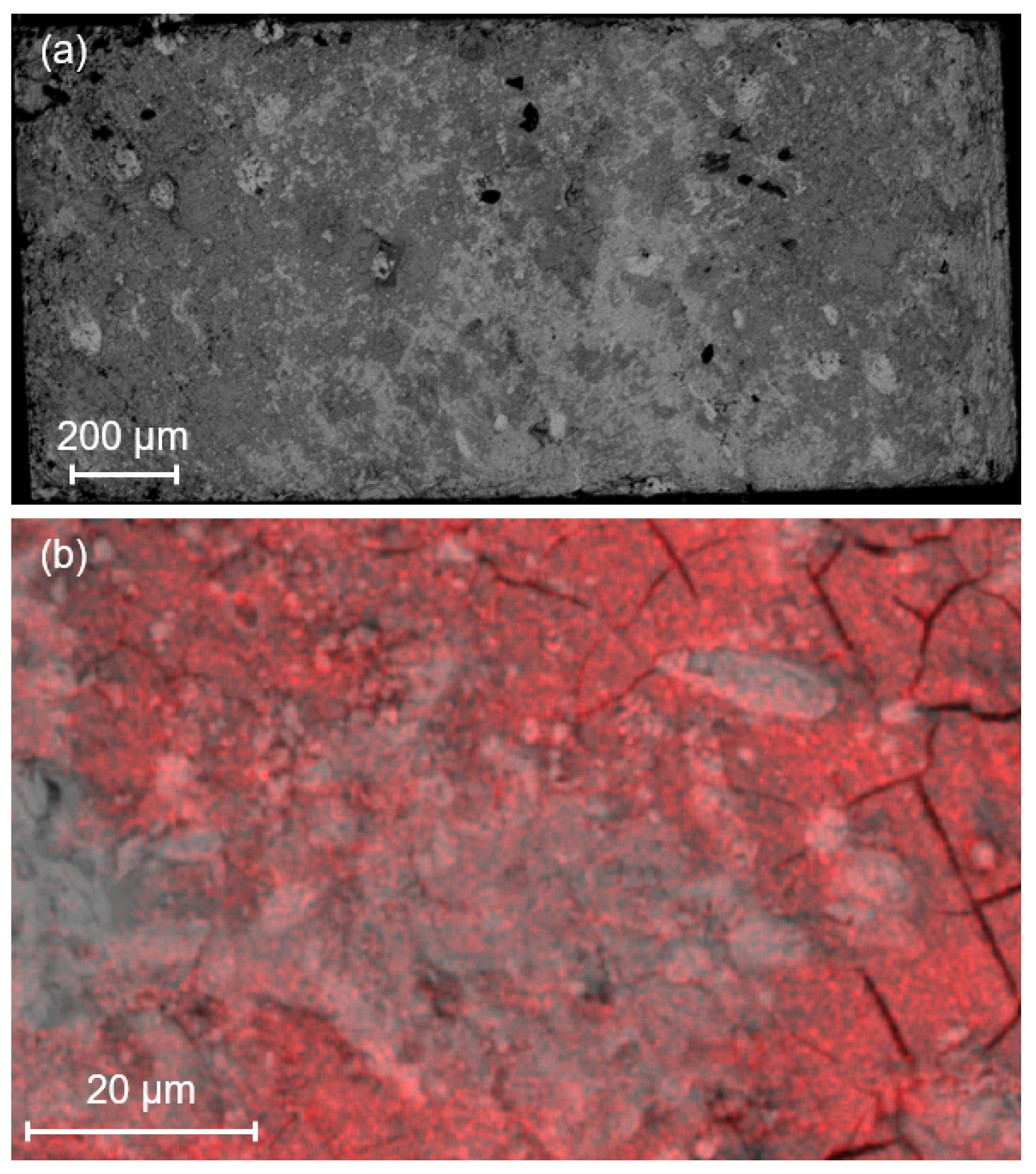
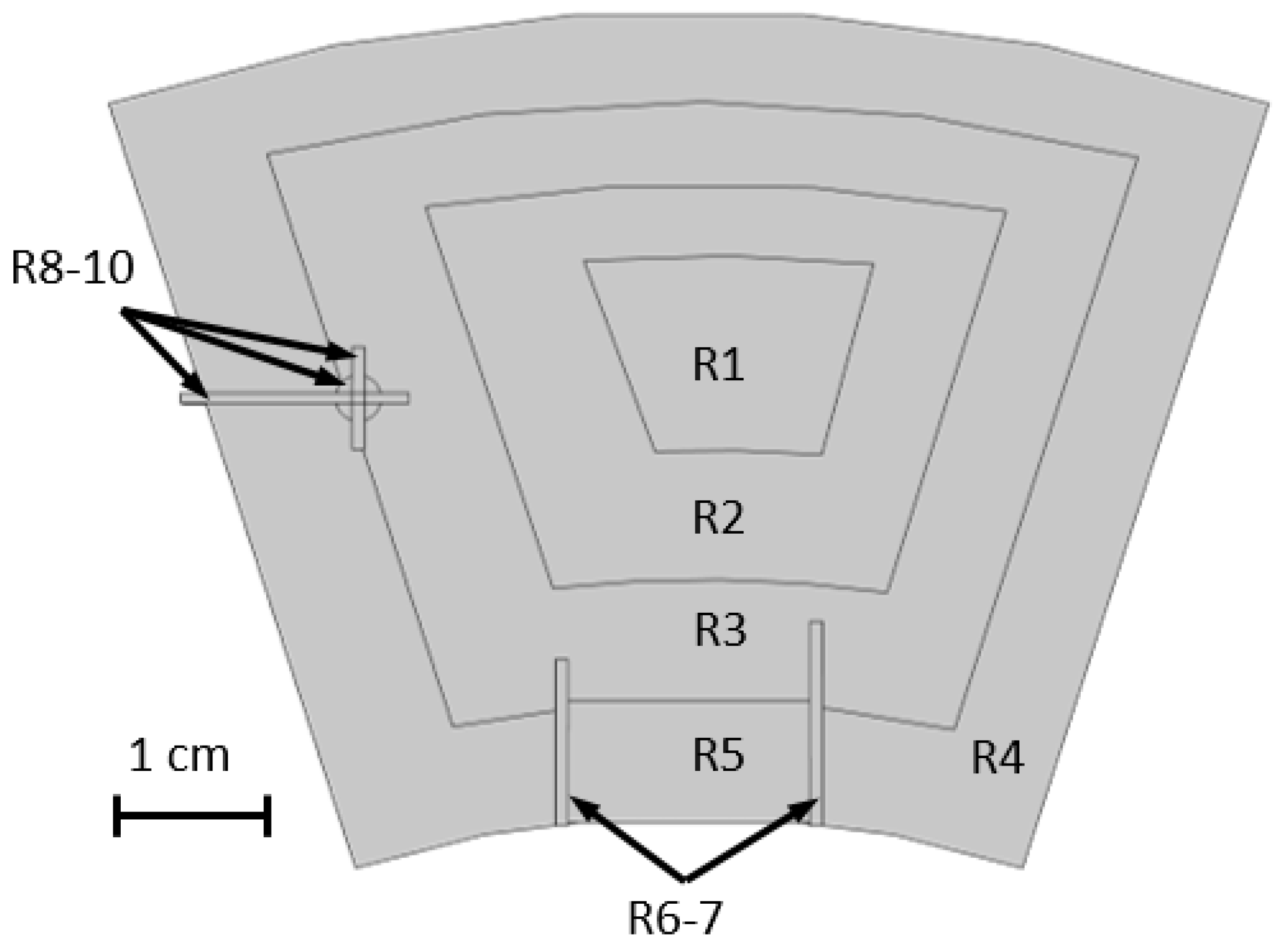
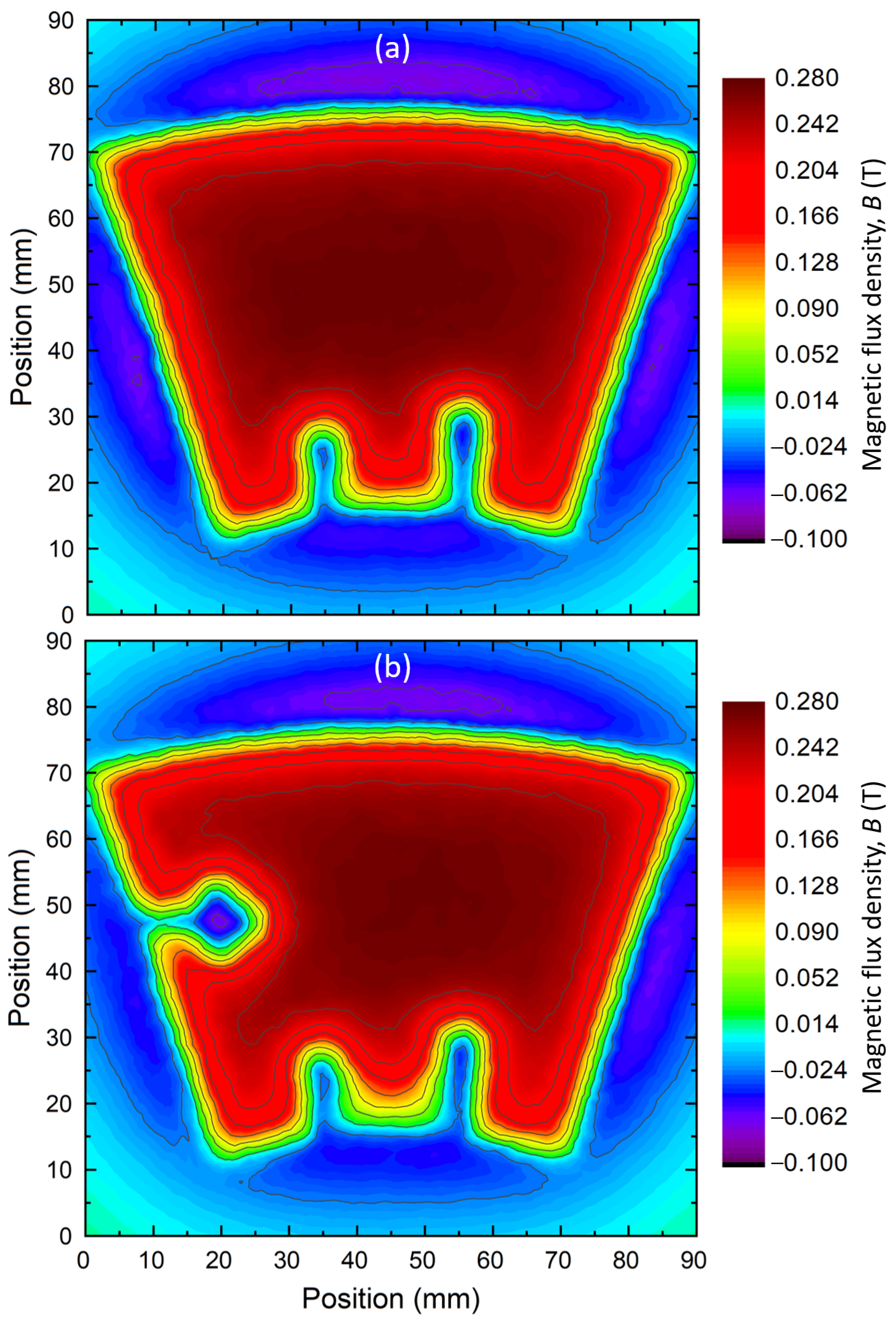
| Bulk | Trapped Field (T) | Levitation Force (N) |
|---|---|---|
| S1 | 0.49 | 99.04 |
| S2 | 0.50 | 100.81 |
| S3 | 0.49 | 101.79 |
| S4 | 0.51 | 103.75 |
| S5 | 0.51 | 101.89 |
| S6 | 0.52 | 104.93 |
| S7 | 0.51 | 104.07 |
| S8 | 0.49 | 105.22 |
| S9 | 0.55 | 104.80 |
| S10 | 0.50 | 106.40 |
| Average | 0.51 | 103.27 |
| Standard deviation | 0.02 | 2.30 |
| Sample | A | p | q | |||
|---|---|---|---|---|---|---|
| G1 | 12.868 | 1.783 | 1.961 | 0.986 | 0.476 | 0.507 |
| G2 | 15.034 | 1.812 | 2.1746 | 0.988 | 0.454 | 0.436 |
| G3 | 19.134 | 1.836 | 2.555 | 0.990 | 0.418 | 0.398 |
| G4 | 20.315 | 1.955 | 2.491 | 0.990 | 0.440 | 0.450 |
| B2 | 11.787 | 1.731 | 1.889 | 0.985 | 0.478 | 0.459 |
| B3 | 16.780 | 1.901 | 2.221 | 0.990 | 0.461 | 0.459 |
| B4 | 18.580 | 1.897 | 2.393 | 0.992 | 0.442 | 0.459 |
| D1 | 13.624 | 1.769 | 2.046 | 0.991 | 0.464 | 0.464 |
| Average | 16.015 | 1.836 | 2.216 | 0.989 | 0.454 | 0.454 |
| Standard deviation | 3.159 | 0.077 | 0.246 | 0.003 | 0.020 | 0.030 |
| Sample | G1T | G4T | D1T |
|---|---|---|---|
| 2(deg) | 22.85 | 22.61 | 22.59 |
| 2(deg) | 38.46 | 38.30 | 38.13 |
| 2(deg) | 46.53 | 46.11 | 46.05 |
| 11.67 | 11.79 | 11.80 | |
| 11.69 | 11.74 | 11.79 | |
| 11.70 | 11.80 | 11.82 | |
| 11.69 | 11.78 | 11.80 |
Disclaimer/Publisher’s Note: The statements, opinions and data contained in all publications are solely those of the individual author(s) and contributor(s) and not of MDPI and/or the editor(s). MDPI and/or the editor(s) disclaim responsibility for any injury to people or property resulting from any ideas, methods, instructions or products referred to in the content. |
© 2024 by the authors. Licensee MDPI, Basel, Switzerland. This article is an open access article distributed under the terms and conditions of the Creative Commons Attribution (CC BY) license (https://creativecommons.org/licenses/by/4.0/).
Share and Cite
Nouailhetas, Q.; Xing, Y.; Dorget, R.; Dirahoui, W.; Guijosa, S.; Trillaud, F.; Lévêque, J.; Noudem, J.G.; Labbé, J.; Berger, K. Characterisation of Large-Sized REBaCuO Bulks for Application in Flux Modulation Machines. Materials 2024, 17, 3827. https://doi.org/10.3390/ma17153827
Nouailhetas Q, Xing Y, Dorget R, Dirahoui W, Guijosa S, Trillaud F, Lévêque J, Noudem JG, Labbé J, Berger K. Characterisation of Large-Sized REBaCuO Bulks for Application in Flux Modulation Machines. Materials. 2024; 17(15):3827. https://doi.org/10.3390/ma17153827
Chicago/Turabian StyleNouailhetas, Quentin, Yiteng Xing, Rémi Dorget, Walid Dirahoui, Santiago Guijosa, Frederic Trillaud, Jean Lévêque, Jacques Guillaume Noudem, Julien Labbé, and Kévin Berger. 2024. "Characterisation of Large-Sized REBaCuO Bulks for Application in Flux Modulation Machines" Materials 17, no. 15: 3827. https://doi.org/10.3390/ma17153827
APA StyleNouailhetas, Q., Xing, Y., Dorget, R., Dirahoui, W., Guijosa, S., Trillaud, F., Lévêque, J., Noudem, J. G., Labbé, J., & Berger, K. (2024). Characterisation of Large-Sized REBaCuO Bulks for Application in Flux Modulation Machines. Materials, 17(15), 3827. https://doi.org/10.3390/ma17153827








